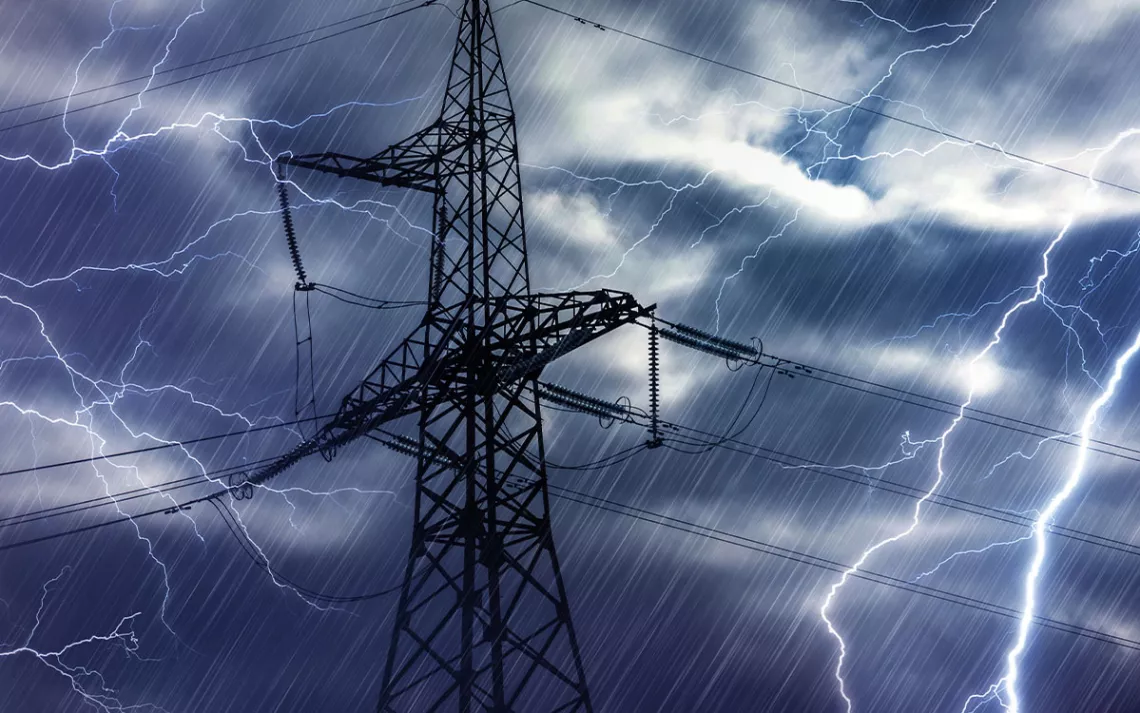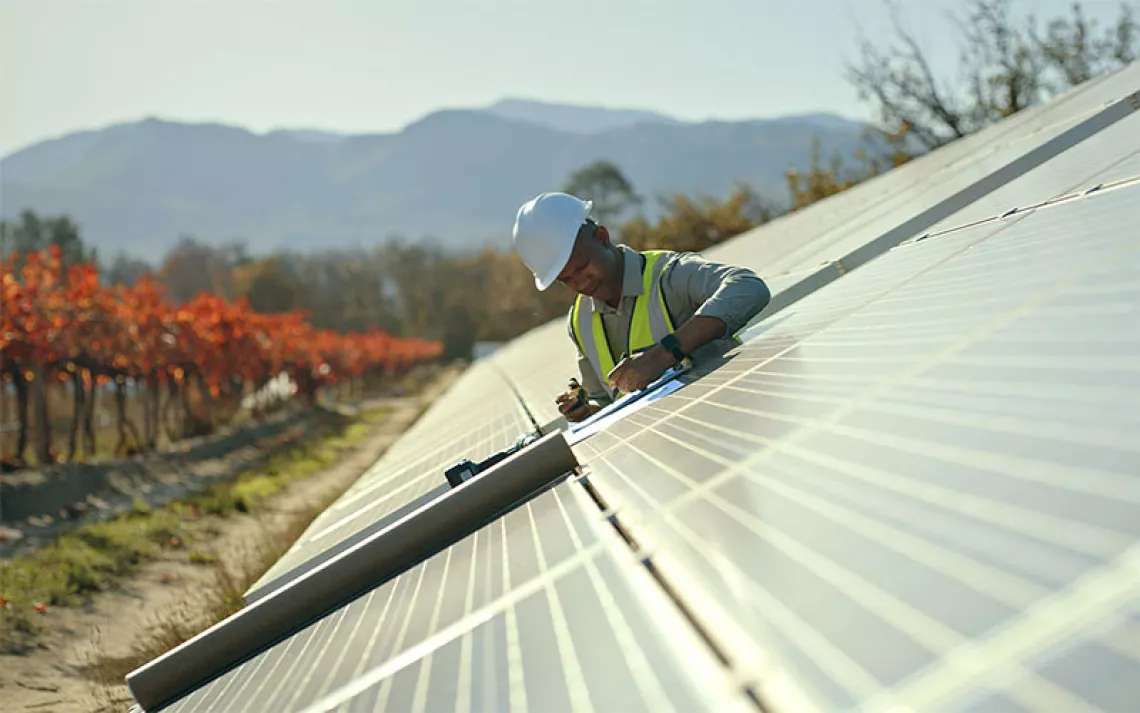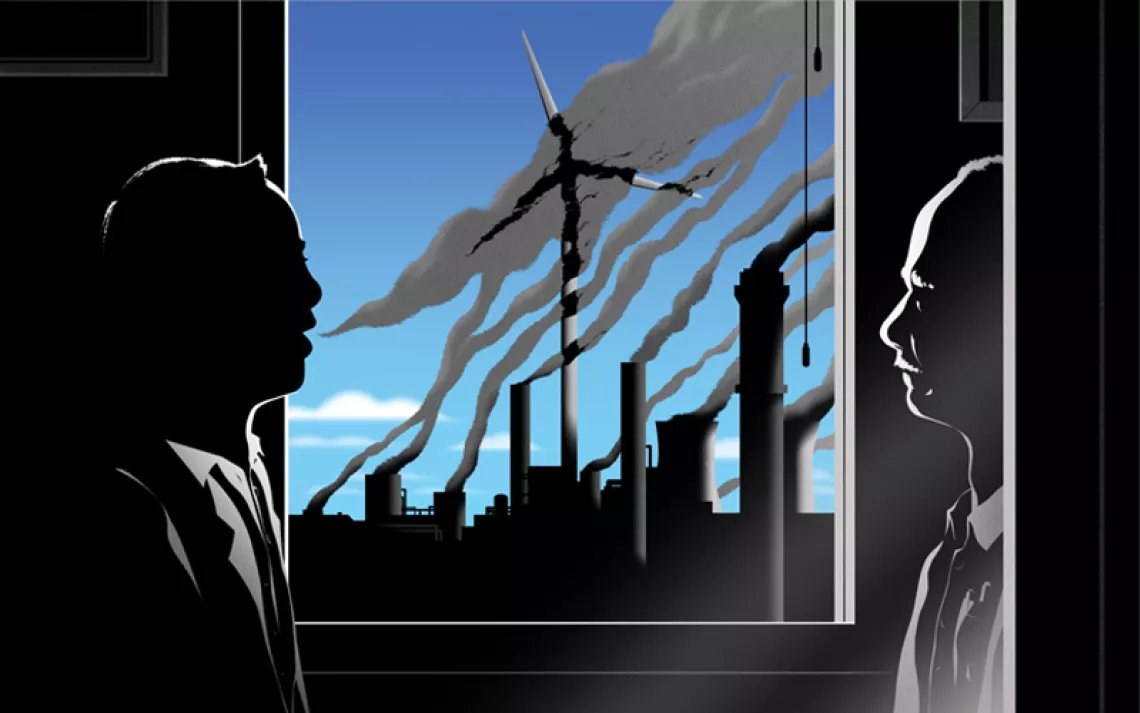The Key to Electric Grid Reliability? Renewables.
Fossil-fuel-reliant utilities are less reliable than they claim

Photo by privetik/iStock
Distributed by Trice Edney Newswire
February 2021. A rare Valentine's Day winter storm wallops Texas with snow and a deep freeze.
The storm knocked out power for at least 69 percent of people across the state. More than 200 Texans died.
That was Winter Storm Uri. Many of us probably remember it as the storm that sent Senator Ted Cruz packing for a vacation in Cancún while his constituents suffered.
Captain Selena Xie, president of the Austin Emergency Medical Services Association, was enraged when she read from a local reporter at the time: “One reader who emailed me about the issue described the power and water outages as a ‘minor inconvenience’ for most Texans.”
One of Xie’s first calls the morning after the storm was for a man who had planned to die at home, peacefully and surrounded by loved ones. That didn’t happen.
Xie recounted, "When his oxygen, which was making him comfortable, went out, he started making awful grunting sounds. It is not acceptable to die like that, in agony. We had no other options at the time than to take the person to the hospital to keep him comfortable, but not before we let his wife cry against his chest for five minutes, which was all we felt comfortable sparing at the time."
Emergency responders started receiving carbon monoxide calls that evening. With the power out, people were so desperate for heat they burned furniture in their homes to keep their families warm. That caused carbon monoxide poisoning.
Just last week, much of the country got pummeled with below-freezing temperatures and winter storms. Many are rightly nervous about the reliability of their power grids.
When grids fail, people die. Medical equipment like dialysis machines and oxygen pumps cannot run without power.
What’s the best way to protect grids and make them more reliable? Power them with renewable energy sources like solar and wind, which are far more resilient than coal, oil, and gas.
The five winter storms we have had since 2011 that knocked down power grids should be a lesson to us all. Fossil fuel power plants are prone to mechanical and supply failures in extreme cold, when energy demands are often at their highest.
Just look at what happened during December 2022’s Winter Storm Elliott in the eastern and central US. In the mid-Atlantic, nearly 90 percent of the power plant outages when demand was highest were coal and gas plants. In the central region, coal and gas plants accounted for 75 percent of the power plant outages during peak demand. In Kentucky alone, more than 1.5 million homes lost electricity in sub-zero temperatures due to coal and gas failures.
Increasing the use of renewable energy sources is one part of the solution. Incorporating green technologies in demand response, energy efficiency, storage, and upgrading our transmission grid is the other. Together, they offer us the chance to make our electric grids more reliable and resilient than ever. But we need to deploy them at scale to receive these benefits.
If we choose not to do this, we need to understand the human toll.
As she has reflected on the events from Winter Storm Uri—and storms that have knocked out or threatened to knock out power since then—Xie worries about unhoused populations. When the shelters and businesses where unhoused people typically seek refuge are without power, the consequences for this already vulnerable population are lethal.
“When we have our 911 system completely overwhelmed by calls from the housed population, the unhoused population gets overlooked,” Xie said. “EMS and other emergency workers are aware of people living on the streets or in the woods and would be checking on those at-risk people. But we end up beyond our capacity, responding to calls for emergencies—and some less-than-emergencies—at people’s homes, delivering charging sticks and other relief, while unhoused people are suffering hypothermic events and dying.”
Xie also said that while media reporting often focuses on death tolls during these emergencies, the high number of amputations from conditions like frostbite go underreported and underappreciated.
“People are often able to protect their cores but not their extremities. Not having adequate gloves or footwear means more amputations. These create lifelong disabilities that continue to haunt both the people suffering from them and the public health and emergency response systems that need to provide for their care and services.”
Emergency responders should not have to choose between who they can help and who will be left on their own. Families should not have to choose between freezing to death or risking their health by burning furniture for heat.
There is a way to help ensure the power stays on during harsh winter storms. It is a future powered by clean energy.
 The Magazine of The Sierra Club
The Magazine of The Sierra Club







